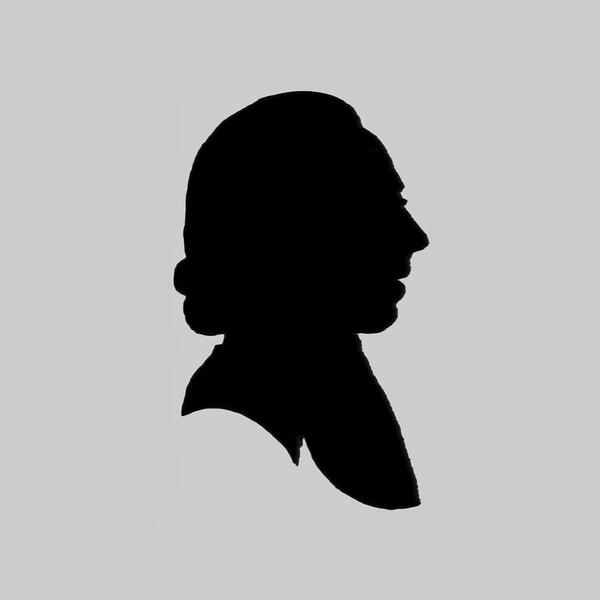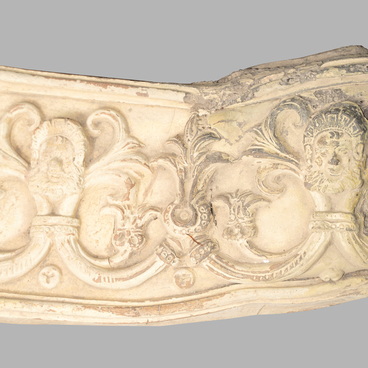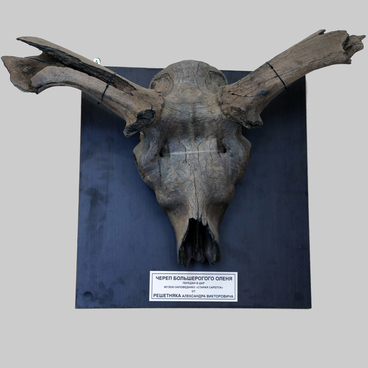Silhouette portraits were in vogue in France, England and Germany in the 18th and 19th centuries. They were usually cut out of black paper with scissors. An unknown author portrays the first Sarepta missionary, Johann Neitz who was a physician, linguist, translator from Kalmyk into German and a founder of the production of Sarepta mustard.
Johann Konrad Neitz was born in Poland in 1743. At 23, he came to Sarepta as an artisan tailor. Working as a tailor, Johann quickly mastered the spoken Russian and Kalmyk languages thanks to his customers.
There were no dictionaries and grammar so the Kalmyk language had to be studied directly from native speakers. Neitz tried to write down Kalmyk words and learned phrases, replenishing vocabulary and compiling dictionaries. In 1768, Neitz, together with Friedrich Maltsch and Christian Hamel, made the first missionary trip to the nomad camps of the Kalmyk Derbet horde. They studied the language and customs, and lifestyle of the Kalmyks.
Johann Neitz then worked as an apprentice pharmasist and assistant doctor for the community dictor Johann Veer. He was engaged in the cultivation and procurement of medicinal herbs for the community pharmacy, collected oriental medical knowledge, gained experience in the field of surgery, eye diseases. Neitz was Veer’s companion in the search and discovery of the ErgenI source of mineral water in 1769.
On June 13, 1782, 39-year-old Johann Neitz married Johanna Dorothea Neumann and moved into a small wooden house. For some time, he was engaged in healing Kalmyks. A German healer, who is fluent in Kalmyk and uses Kalmyk and Tibetan medicines, has gained great popularity among ordinary Kalmyks.
Neitz was also engaged in agricultural experiments - he raised thoroughbred fine-fleeced sheep, grew grapes, strawberries, saffron, hemp, castor oil plant, indigo, sugar sorghum, peanuts.
However, most of all, Johan Neitz became famous as the founder of mustard production in Russia. Around 1798, the Imperial Free Economic Society sent mustard seeds to Sarepta for a trial planting. Neitz was tasked with cultivating and breeding English white and French black mustard and developing a technology for its factory processing for commercial production.
In 1801, Neitz was the first in Russia to engage in manual mustard production with hot pressing of oil and grinding the cake into powder on a manual coffee grinder. In 1810, together with his son-in-law Johann Glitch, Neitz constructed Russia’s first mustard mill with a horse-drawn mill and expanded production using hired labor.
At the same time, samples of the products of the Neitz factory - table mustard and butter - were presented to the court of Alexander the First. The emperor highly appreciated the excellent quality of Sarepta mustard and oil, the strength, aroma and transparency of oil, unusual for English table mustard. Alexander the First deigned to reward the manufacturer Neitz with a gold watch. As a result of Neitz’s work, SarEpta became the center of the mustard industry in Russia.
Johann Konrad Neitz was born in Poland in 1743. At 23, he came to Sarepta as an artisan tailor. Working as a tailor, Johann quickly mastered the spoken Russian and Kalmyk languages thanks to his customers.
There were no dictionaries and grammar so the Kalmyk language had to be studied directly from native speakers. Neitz tried to write down Kalmyk words and learned phrases, replenishing vocabulary and compiling dictionaries. In 1768, Neitz, together with Friedrich Maltsch and Christian Hamel, made the first missionary trip to the nomad camps of the Kalmyk Derbet horde. They studied the language and customs, and lifestyle of the Kalmyks.
Johann Neitz then worked as an apprentice pharmasist and assistant doctor for the community dictor Johann Veer. He was engaged in the cultivation and procurement of medicinal herbs for the community pharmacy, collected oriental medical knowledge, gained experience in the field of surgery, eye diseases. Neitz was Veer’s companion in the search and discovery of the ErgenI source of mineral water in 1769.
On June 13, 1782, 39-year-old Johann Neitz married Johanna Dorothea Neumann and moved into a small wooden house. For some time, he was engaged in healing Kalmyks. A German healer, who is fluent in Kalmyk and uses Kalmyk and Tibetan medicines, has gained great popularity among ordinary Kalmyks.
Neitz was also engaged in agricultural experiments - he raised thoroughbred fine-fleeced sheep, grew grapes, strawberries, saffron, hemp, castor oil plant, indigo, sugar sorghum, peanuts.
However, most of all, Johan Neitz became famous as the founder of mustard production in Russia. Around 1798, the Imperial Free Economic Society sent mustard seeds to Sarepta for a trial planting. Neitz was tasked with cultivating and breeding English white and French black mustard and developing a technology for its factory processing for commercial production.
In 1801, Neitz was the first in Russia to engage in manual mustard production with hot pressing of oil and grinding the cake into powder on a manual coffee grinder. In 1810, together with his son-in-law Johann Glitch, Neitz constructed Russia’s first mustard mill with a horse-drawn mill and expanded production using hired labor.
At the same time, samples of the products of the Neitz factory - table mustard and butter - were presented to the court of Alexander the First. The emperor highly appreciated the excellent quality of Sarepta mustard and oil, the strength, aroma and transparency of oil, unusual for English table mustard. Alexander the First deigned to reward the manufacturer Neitz with a gold watch. As a result of Neitz’s work, SarEpta became the center of the mustard industry in Russia.



